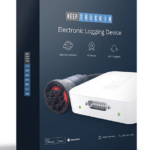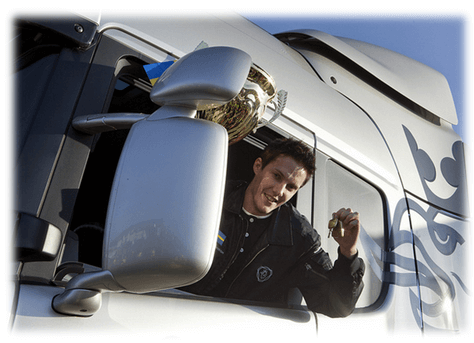Best e-Logs Comparison Chart
| ELD Crtiteria/ELDs |  Keep Truckin |  ZED ELD for Cummins Engines |  Garmin e-Log |
|---|---|---|---|
| Separate accounts for drivers and admin | Compliant | Compliant | Compliant |
| Auto records engine power, vehicle motion status | Compliant | Compliant | Compliant |
| Auto records engine power, vehicle motion status | Compliant | Compliant | Compliant |
| Records date, time, location, engine hours, truck miles, and driver ID | Compliant | Compliant | Compliant |
| GPS location tracking | Compliant | Compliant | Compliant |
| Contains complete user manual by law | Compliant | Compliant | Compliant |
| Allows transfer of e-log date by email, USB, bluetooth, and printout | Compliant | Compliant | Compliant |
| Prevents tampering | Compliant | Compliant | Compliant |
| Requires driver's certification and annotation. | Compliant | Compliant | Compliant |
| Price | Check Price | Check Price | Check Price |
The hours of service rules apply to a commercial motor vehicle that is involved in:
- Interstate commerce and weighs 10,001 pounds or more regardless of loaded or empty.
- Interstate commerce and has a licensed gross vehicle weight rating of 10,001 pounds or greater
- Interstate or intrastate commerce and is transporting hazardous materials in an amount needing the use of placards.
Interstate vs Intrastate
Interstate commerce means that freight has travelled into or through another state or country. It does not matter whether the truck goes out of the state to move the freight or stays within the state’s boundaries, it is the movement of the freight that determines if the HOS rules apply.
Intrastate means the goods or services do not leave the state. Intrastate commerce trucking is exempt from the HOS rules and drivers do not need to carry an electronic logbook. However, it is very uncommon that the goods or services are not transported outside of a state and therefore majority of truck drivers fall into the interstate category not the intrastate. The only exception to intrastate commerce is if you are hauling hazardous materials, then you must comply with the HOS rules.
ELD Mandate
The electronic logging device mandate applies to majority of motor carriers and drivers. There are exemptions to the electronic logging device mandate and they apply to:
- Drivers of trucks manufactured before model year 2000 (1999 or earlier)
- Drivers who only use paper logs no greater than 8 days during any 30-day period.
- Tow truck drivers that transport a vehicle as a commodity and do so by keeping at least one set of wheels of the vehicle on the surface of the road.
AOBRD vs ELD Differences
All carriers were required to meet the ELD mandate regulations by December 18, 2017. The only exception was that drivers using automatic on-board recording devices (AOBRD) can continue using them in place of an ELD until December 16, 2019. This is referred to as the phase-in-compliance phase where ELD mandate laws may not be fully enforced but come December 16, 2019 all drivers must retire the AOBRD and use an ELD and expect the full-compliance phase to be enforced stringently.
How do you use an ELD?
- Driver’s must only have one driver account with a carrier with a unique username and password. Owner operators must have only one account as a driver and can have a separate account for administrative purposes.
- Respond to unassigned driver hours occur when the truck is driven with no driver being logged into the ELD. All driving hours in which the truck was driven must be assigned or a note filed stating they do not belong to a specific driver.
- Record duty status changes once the driver has stopped driving. The ELD will automatically change into driving status once the truck begins moving. However, the ELD requires the driver to input whether they are in the sleeper berth or off-duty.
- Drivers need to know how to edit electronic logs and add annotations after each edit. Drivers cannot edit driving time, ELD malfunctions, vehicle start/stop, and driver logins or logouts. They can edit personal use of the truck or mention adverse driving conditions.
- Drivers need to know how to sign the electronic logbook and certify it. If a fleet manager makes an edit to the driver’s log the driver must re-certify the log.
- Drivers need to know how to transfer electronic logs by email or through Bluetooth to an DOT/CVSA inspector if requested.
ELD Manual and Malfunctions
By law, you are required to keep the electronic logging device user’s manual including a emergency procedure manual to handle malfunctions of the device. Therefore, do not throw away your ELD manual when you buy your device! You must also keep an 8-day supply of paper logs in case you encounter an ELD malfunction.
Electronic logging devices are technology and technology can be subject to a malfunction at some point in time. The best e-logs recommended meet the requirement to be able to detect malfunctions related to power, data synchronization, location positioning, missing data timing, unidentified driver records, data recording, and data transfer. If any of these occur, the ELD must tell you this immediately and whether the error has been fixed. If a malfunction occurs, the driver must report it within 24 hours.




